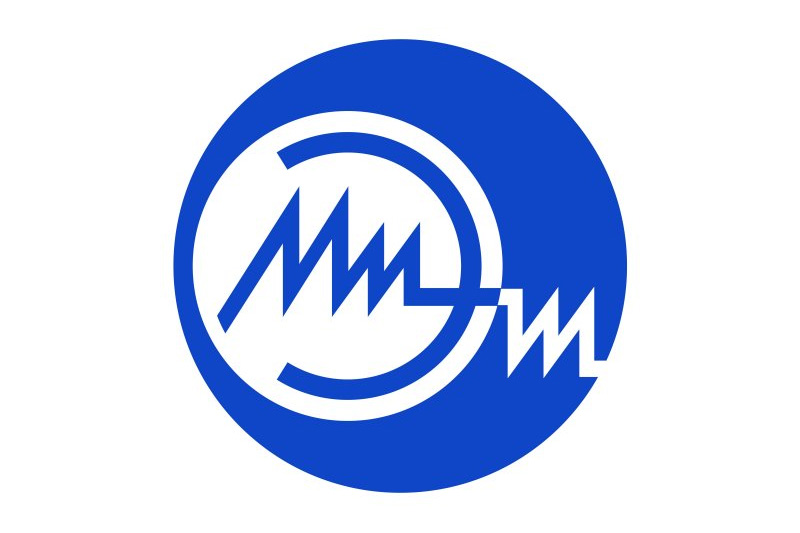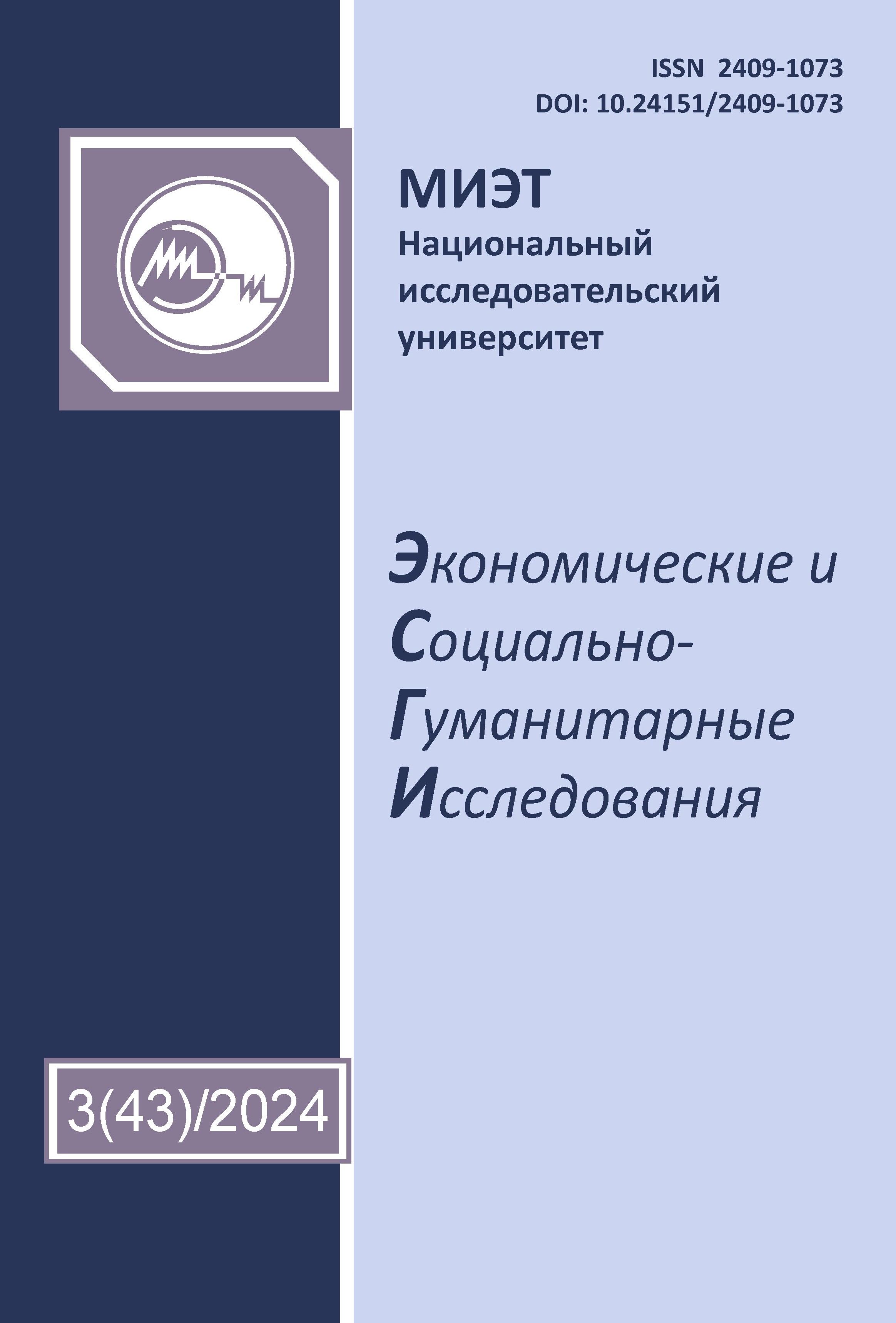employee
Russian Federation
In this work, a review of studies of international cooperation and its importance in developing the creative economy is done. The peculiarities and realization tendencies of international scientific and technological cooperation in different spheres of cultural activity are shown. Statistical data on the development of the creative economy on a global scale, UN methodology for creative goods and services classification are presented. Based on statistical data on creative economy development in the Republic of Belarus, the dynamics of the growth of gross value added has been compiled. The factors slowing down the development of creative economy in the Republic of Belarus have been identified.
creative economy, international cooperation, digitalization, gross value added, economy of Belarus
1. “Belarus in Figures”. President of the Republic of Belarus. N. d. Web. 31 Jul. 2024. <https://president.gov.by/ru/belarus/numbers>.
2. Gumerov L. A. International Legal Control of Scientific and Technological Cooperation of Member States of the CIS: monograph. Moscow: RAP, 2005. 188 p. (In Russian). EDN: https://elibrary.ru/QWPETN.
3. Genovese Michele. “The EU S&T Co-operation with the Largest Regions of the World”. Forsayt = Foresight Russia 2.1 (2008): 73—77. (In Russian). EDN: https://elibrary.ru/NURHIT.
4. Kiselevich A. I. “Problems of Commercoalization of Innovations and Possible Ways of their Solution”. Strategicheskiye napravleniya sotsial’no-ekonomicheskogo i finansovogo obespecheniya razvitiya natsional’noy ekonomiki: materialy II Mezhdunar. nauch.-prakt. konf. (27—28 sent. 2018). Ed. by V. V. Puzikov. Minsk: Pravo i ekonomika, 2018. 104—105. (In Russian). EDN: https://elibrary.ru/YSEOPB.
5. Kovalenko K. E. “Main Legal Forms of International Scientific and Technical Cooperation”. Rossiysko-aziatskiy pravovoy zhurnal = Russian-Asian Law Journal 2 (2019): 64—66. (In Russian). EDN: https://elibrary.ru/KOUYFW.
6. “Concept for the Development of Originative (Creative) Industries and Mechanisms for their State Support in Large and Major Urban Agglomerations until 2030: RF Government Executive Order of September 20, 2021 No. 2613-r”. Pravitel’stvo Rossii. N. d. (In Russian). Web. 30 Aug. 2024. <http://static.government.ru/media/files/HEXNAom6EJunVIxBCjIAtAya8FAVDUfP.pdf>.
7. Loguntsova I. V. “Special Features of China’s Creative Economy”. Gosudarstvennoye upravleniye. Elektronnyy vestnik = E-Journal Public Administration 98 (2023): 21—30. (In Russian). https://doi.org/10.24412/2070-1381-2023-98-21-30 EDN: https://elibrary.ru/DYYEZV.
8. Losev K. V., Molchanova S. M. “The Innovation System of Great Britain”. Ekonomicheskiye otnosheniya = Journal of International Economic Affairs 9.4 (2019): 2433—2444. (In Russian). https://doi.org/10.18334/eo.9.4.41261 EDN: https://elibrary.ru/FKAYUI.
9. Malashenkova O. F., Kaminskaya V. V. “Technology Transfer in the Western Economics”. Belarus’ i mirovyye ekonomicheskiye protsessy: collection of scientific articles. Iss. 10. Minsk: BSU, 2013. 14—25. (In Russian). EDN: https://elibrary.ru/MTBNDJ.
10. Makhalin V. N. “State Regulation of Creative Economy of Russia: Creative Climate and Creative Class”. Ekonomika i upravleniye: analiz tendentsiy i perspektiv razvitiya 17 (2014): 19—24. (In Russian). EDN: https://elibrary.ru/TDRRRL.
11. Zadumkin K. A., Terebova S. V., Goncharov V. V., Kolotukhin V. A., Nikeyenko D. V. International Scientific and Technological Cooperation: Regional Aspect. Vologda: In-t sots.-ekon.·razvitiya territoriy RAN, 2012. 154 p. (In Russian). EDN: https://elibrary.ru/RVXUJT.
12. Nechepurenko Yu. V. Commercialization of R&D Deliverables in the Republic of Belarus: monograph. Minsk: Res. Institute for Phys.-Chem. Problems of the BSU, 2012. 225 p. (In Russian). EDN: https://elibrary.ru/ZTRXHM.
13. “Belarus Republic National Classifier OKRB 005-2011. Types of Economic Activity [Amendment No. 6 enacted by Resolution of Belarus Republic National Statistical Committee No. 99 of 29 October 2021]”. National Statistical Committee of the Republic of Belarus. N. d. (In Russian). Web. 28 Aug. 2024. <https://www.belstat.gov.by/upload-belstat/upload-belstat-pdf/klassifikatory/OKRB 005-2011_30_12_2016.pdf>.
14. “Services Purchased by the Public”. National Statistical Committee of the Republic of Belarus. 2023. (In Russian). Web. 28 Aug. 2024. <https://www.belstat.gov.by/ofitsialnaya-statistika/solialnaya-sfera/uslugi/godovye-dannye_8/obem-platnyh-uslug-naseleniyu/>.
15. “Main Indicators of Research and Development (R&D)”. National Statistical Committee of the Republic of Belarus. 2023. Web. 28 Aug. 2024. <https://www.belstat.gov.by/en/ofitsialnaya-statistika/real-sector-of-the-economy/science-and-innovation-/science/annual-data/>.
16. UNCTAD. “Creative Economy Outlook 2022: UNCTAD/DITC/TSCE/2022/1”. United Nations Conference on Trade and Development. Oct. 2022. Web. 31 July 2024. <https://unctad.org/system/files/official-document/ditctsce2022d1_en.pdf>.
17. Simanovskiy S. I. “International Cooperation of the Republic of Belarus in the Scientific and Technical Areas”. Vyestsi BDPU. Syeryya 2. Historyya. Filasofiya. Palitalohiya. Satsyyalohiya. Ekanomika. Kul′turalohiya 1 (83) (2015): 11—14. (In Russian). EDN: https://elibrary.ru/OPIULN.
18. UNCTAD Trade and Development Board. “Trade in Creative Services: Note by UNCTAD Secretariat TD/B/C.I/MEM.4/32”. United Nations Conference on Trade and Development. 1 May 2024. Web. 31 July 2024. <https://unctad.org/system/files/official-document/c1mem4d32_en_1.pdf>.
19. “Shanghai Cooperation Organization Summit in Astana”. President of the Republic of Belarus. 4 July 2024. Web. 31 July 2024. <https://president.gov.by/en/media/details/ucastie-v-zasedanii-soveta-glav-gosudarstv-clenov-sos>.
20. Fetysenko Valeriia. “The Formation of International Cooperation in the Scientific and Technical Sphere: the International Legal Aspect”. Pravova deržava = Constitutional State 21 (2016): 269—275. (In Ukrainian).
21. “Digital Economy”. National Statistical Committee of the Republic of Belarus. 2023. Web. 31 July 2024. <https://www.belstat.gov.by/en/ofitsialnaya-statistika/macroeconomy-and-environment/information-and-communication-technologies-/digital-economy/>.
22. Shugurov M. V., Serebryakov A. A., Pechatnova Yu. V. “International Research Cooperation of Russia in the Conditions of Scaling Sanctions: Characteristics of Institutional Gaps”. Mezhdunarodnyy zhurnal gumanitarnykh i estestvennykh nauk = International Journal of Humanities and Natural Sciences 4-3 (67) (2022): 235—244. (In Russian). https://doi.org/10.24412/2500-1000-2022-4-3-235-244 EDN: https://elibrary.ru/KNGJQJ.
23. Newbigin John. “What is the Creative Economy?”. Creative Economy: British Council programme. N. d. Web. 29 July 2024. <https://creativeconomy.britishcouncil.org/guide/what-creative-economy/>.
24. PricewaterhouseCoopers. “Resetting Expectations, Refocusing Inward and Recharging Growth: Perspectives from the Global Entertainment and Media Outlook 2023—2027. PWC. N. d. Web. 28 Aug. 2024. <https://www.pwc.com/gx/en/industries/entertainment-media/outlook/downloads/PwC-GEMO-2023-PDF.pdf>.







